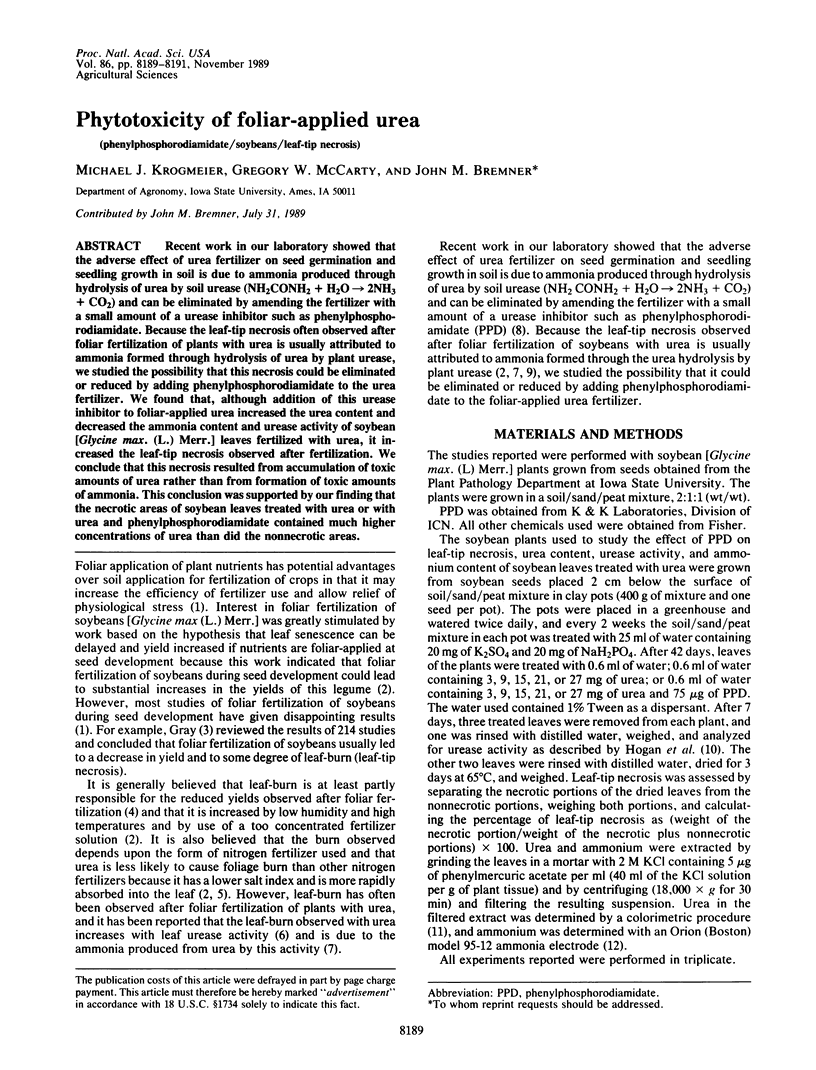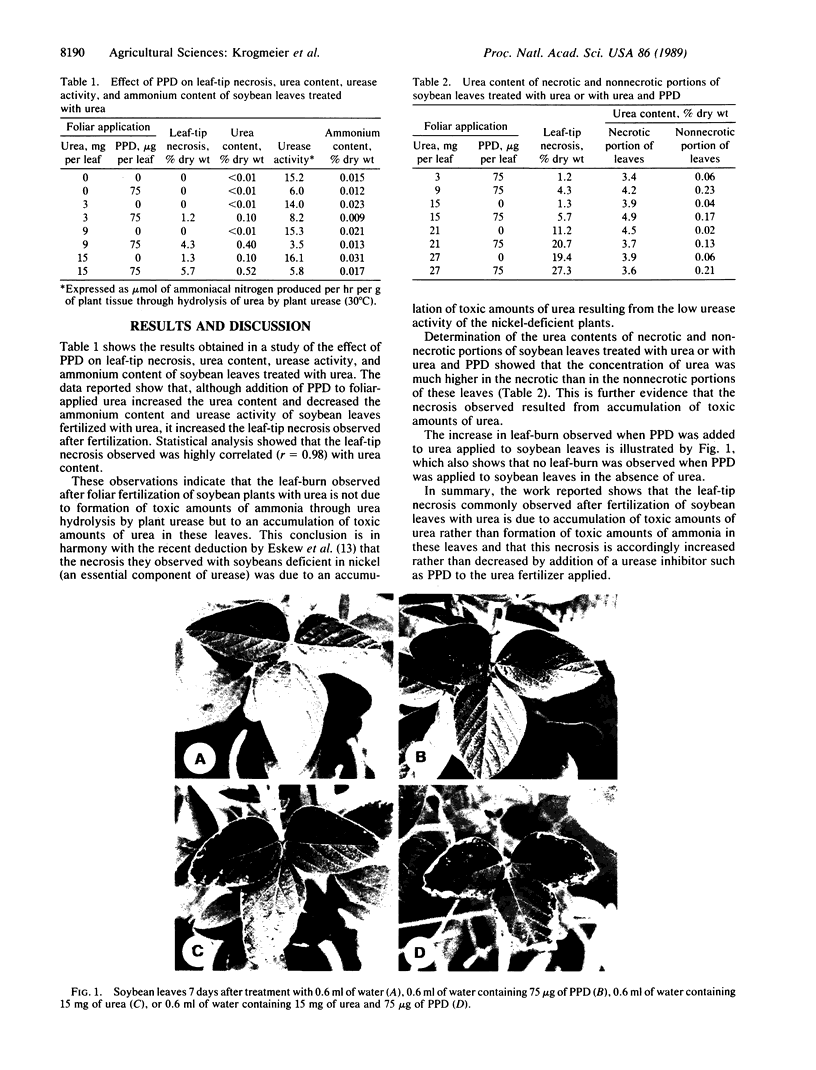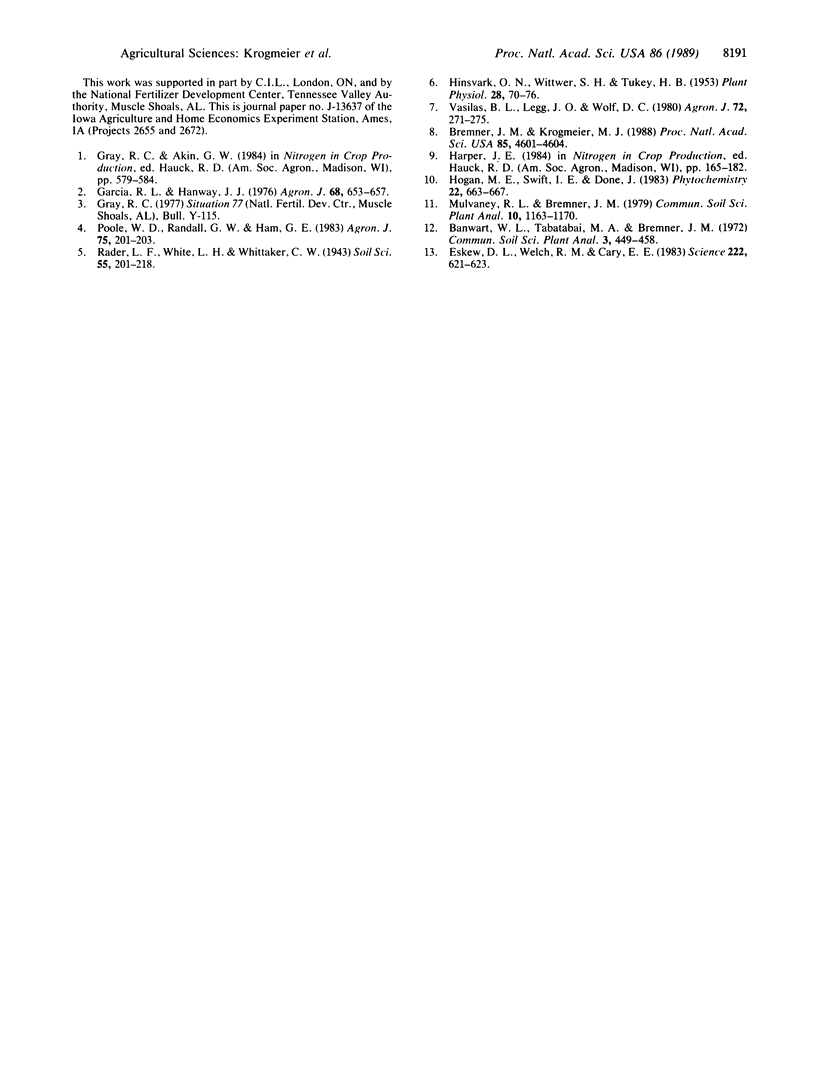Abstract
Recent work in our laboratory showed that the adverse effect of urea fertilizer on seed germination and seedling growth in soil is due to ammonia produced through hydrolysis of urea by soil urease (NH2CONH2 + H2O → 2NH3 + CO2) and can be eliminated by amending the fertilizer with a small amount of a urease inhibitor such as phenylphosphorodiamidate. Because the leaf-tip necrosis often observed after foliar fertilization of plants with urea is usually attributed to ammonia formed through hydrolysis of urea by plant urease, we studied the possibility that this necrosis could be eliminated or reduced by adding phenylphosphorodiamidate to the urea fertilizer. We found that, although addition of this urease inhibitor to foliar-applied urea increased the urea content and decreased the ammonia content and urease activity of soybean [Glycine max. (L.) Merr.] leaves fertilized with urea, it increased the leaf-tip necrosis observed after fertilization. We conclude that this necrosis resulted from accumulation of toxic amounts of urea rather than from formation of toxic amounts of ammonia. This conclusion was supported by our finding that the necrotic areas of soybean leaves treated with urea or with urea and phenylphosphorodiamidate contained much higher concentrations of urea than did the nonnecrotic areas.
Keywords: phenylphosphorodiamidate, soybeans, leaf-tip necrosis
Full text
PDF


Images in this article
Selected References
These references are in PubMed. This may not be the complete list of references from this article.
- Bremner J. M., Krogmeier M. J. Elimination of the adverse effects of urea fertilizer on seed germination, seedling growth, and early plant growth in soil. Proc Natl Acad Sci U S A. 1988 Jul;85(13):4601–4604. doi: 10.1073/pnas.85.13.4601. [DOI] [PMC free article] [PubMed] [Google Scholar]
- Eskew D. L., Welch R. M., Cary E. E. Nickel: an essential micronutrient for legumes and possibly all higher plants. Science. 1983 Nov 11;222(4624):621–623. doi: 10.1126/science.222.4624.621. [DOI] [PubMed] [Google Scholar]
- Hinsvark O. N., Wittwer S. H., Tukey H. B. The Metabolism of Foliar-Applied Urea. I. Relative Rates of CO(2) Production by Certain Vegetable Plants Treated with Labeled Urea. Plant Physiol. 1953 Jan;28(1):70–76. doi: 10.1104/pp.28.1.70. [DOI] [PMC free article] [PubMed] [Google Scholar]



